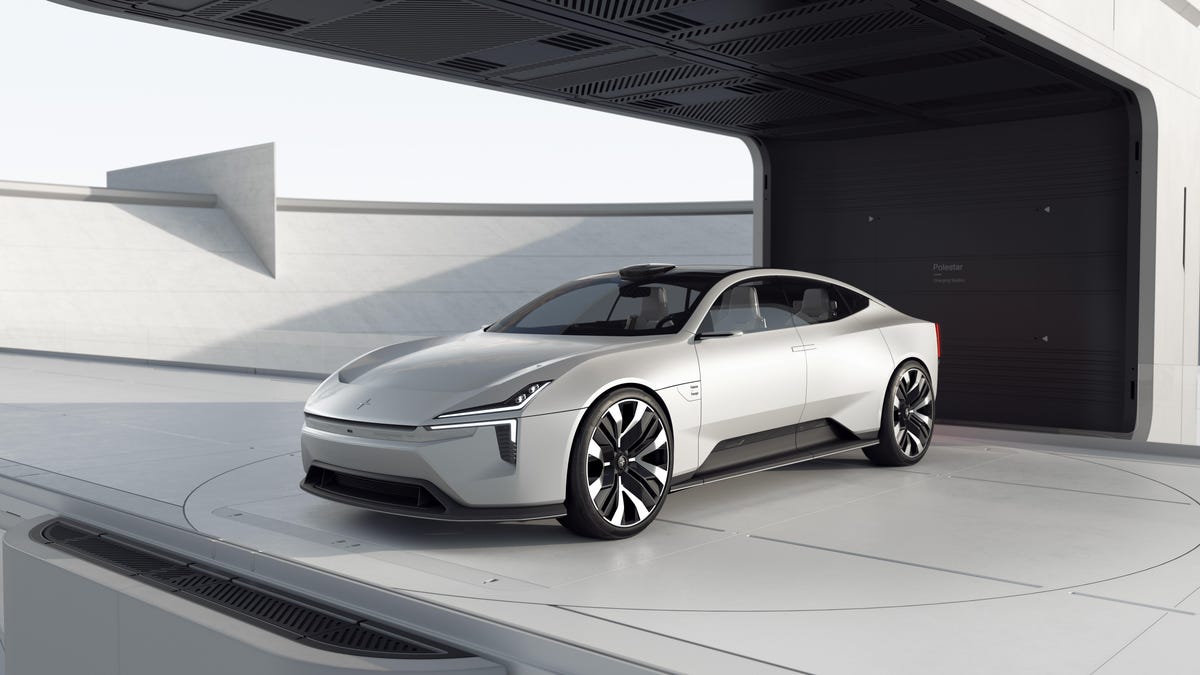Polestar Precept concept points to the future of the brand
Volvo's planned Geneva unveiling for the Precept didn't happen, but is now dishing all the details on the first truly bespoke future model for the future-focused company.
The Geneva Motor Show is arguably the most prominent auto show for concept cars during the calendar year. Most of the major automotive manufacturers -- and even some smaller, boutique builders -- trot out their vision for what the future of cars will be. Many of these concepts look at the distant horizon, but for 2020, Polestar set its sights on a slightly more immediate future.
The Polestar Precept was to make its debut at Geneva, but that show's cancellation meant we needed to wait another month before learning all the details on this near-term vision for Polestar. Now, we have all those details, and still a few questions.
First, there's the intent. Aesthetically, the Precept concept goes in a more aggressive and robotic-looking direction than either the Polestar 1 or Polestar 2. That's no accident. Both of those cars began their lives as Volvo concepts. "Precept," CEO Thomas Ingenlath said, "showcases our future, not as a fancy dream or something out of a sci-fi movie. This is our reality, to come."
It's a theme that Maximilian Missoni, head of design at Polestar, picked up when we spoke with him about the car. With the Polestar 1 and Polestar 2, the Volvo lineage was intentional. "We did want to remind people that we are taking off of the Volvo world," Missoni said, "and there's a lot to trust in this new brand." But the mission with Precept is different: "We've got to show our future intentions."
Polestars intentions are clearly big, and so is the Precept. It's long -- with a 10.8-foot wheelbase -- as well as low and wide. Its roofline is sleek and very coupelike. In truth, it puts us in mind of the Karma Revero, if that car had been designed now, rather than 10 years ago.
"Polestar Precept's aesthetics are rooted in cutting-edge technology rather than looking back in time at historical, automotive references," Maximilian Missoni, head of design at Polestar, said earlier in a statement. "At Polestar, we see technology as an enabler, as a tool to solve our society's problems and we translated this attitude into a new set of design principles. The combination of sustainable materials and high-tech smart systems opens an entirely new chapter of avant-garde luxury design and shows where Polestar is heading."
We're huge fans of the interior of the Polestar Precept, both for its design and for its use of recycled materials.
Embracing those systems is an interesting idea, typified here in the Precept's SmartZone bundle. It's an elegant way of bundling all the sensors necessary for today's advanced driver assistance features into one place, replacing the area that would be occupied by a grille and combines dual radar and a high-definition camera. The lidar unit is mounted above the windshield, but even that is integrated in a way that doesn't necessarily detract from the vehicle's appearance. Indeed, it's highlighted.
"Instead of hiding away the sensors," Missoni said, "we're going to celebrate them."
Also unique is the decision to replace side-view and rearview mirror with cameras -- an increasing trend in other European and Japanese cars. It's something that might be more important here than ever, though, because the Precept doesn't have any rear glass. Instead, the rear passenger seats are positioned high, and the glass roof extended far behind their heads, creating a different, panoramic view.
One of the main talking points for the interior is the continued development of Polestar's Google-powered Human Machine Interface (HMI) as well as a commitment to using more environmentally friendly recycled and recyclable materials such as carpets made from fishing nets, seating surfaces made from PET plastic and headrests made from recycled cork vinyl. The interior is also totally vegan, but this isn't just done in the name of eco-mindedness -- materials like Bcomp organic composite fibers are 50 percent lighter than straight plastic. "It makes a huge difference," Missoni told us.
Like all future Polestar models, the Precept is an electric vehicle, and it uses that length between its wheels to hold a large battery pack, promising a significant cruising range. How much range? Polestar isn't telling, but it's a concept car anyway, so it's not that important -- ditto for power and torque figures.
"Precept is a declaration, a vision of what Polestar stands for and what makes the brand relevant," Thomas Ingenlath, CEO of Polestar, said in a statement. And, crucially, it gives us a vision for how that future will look.




